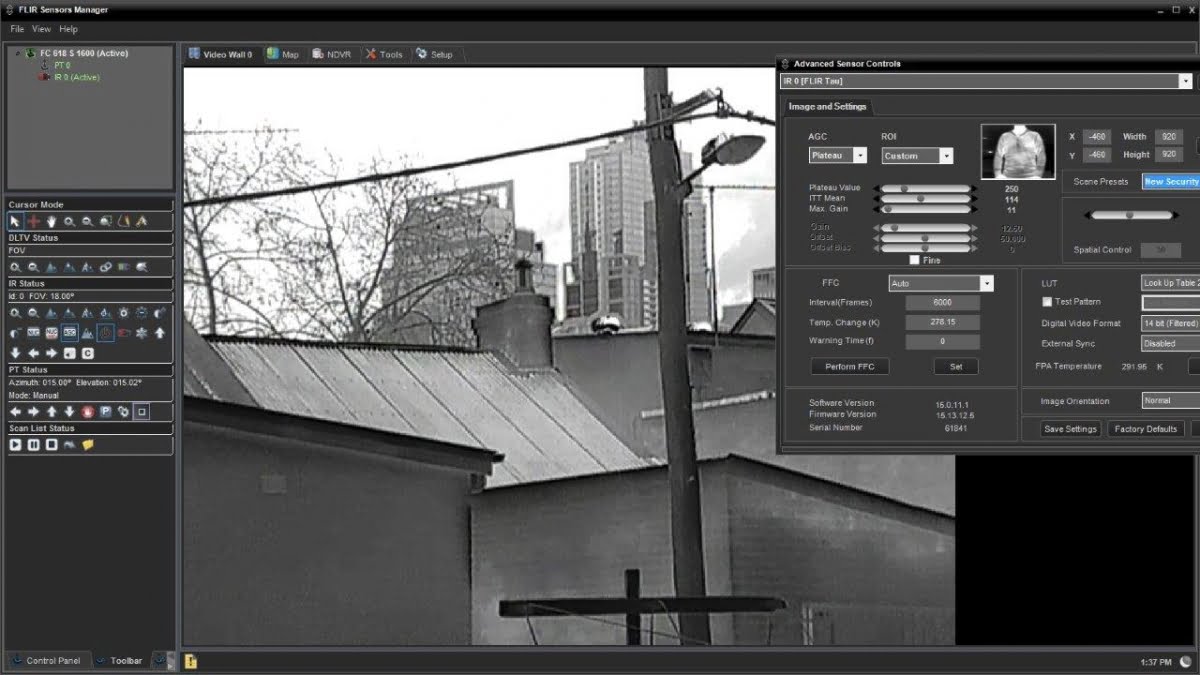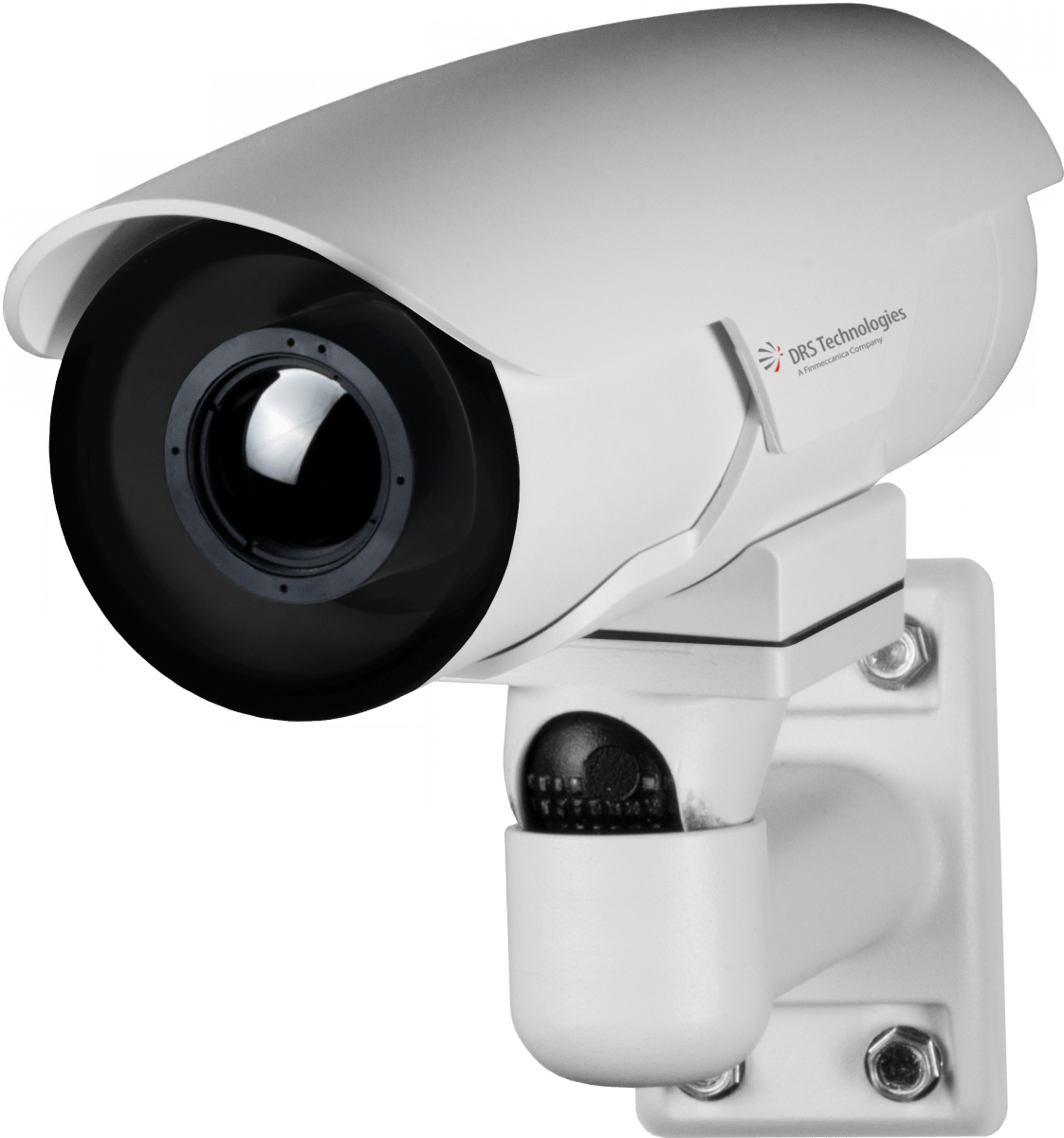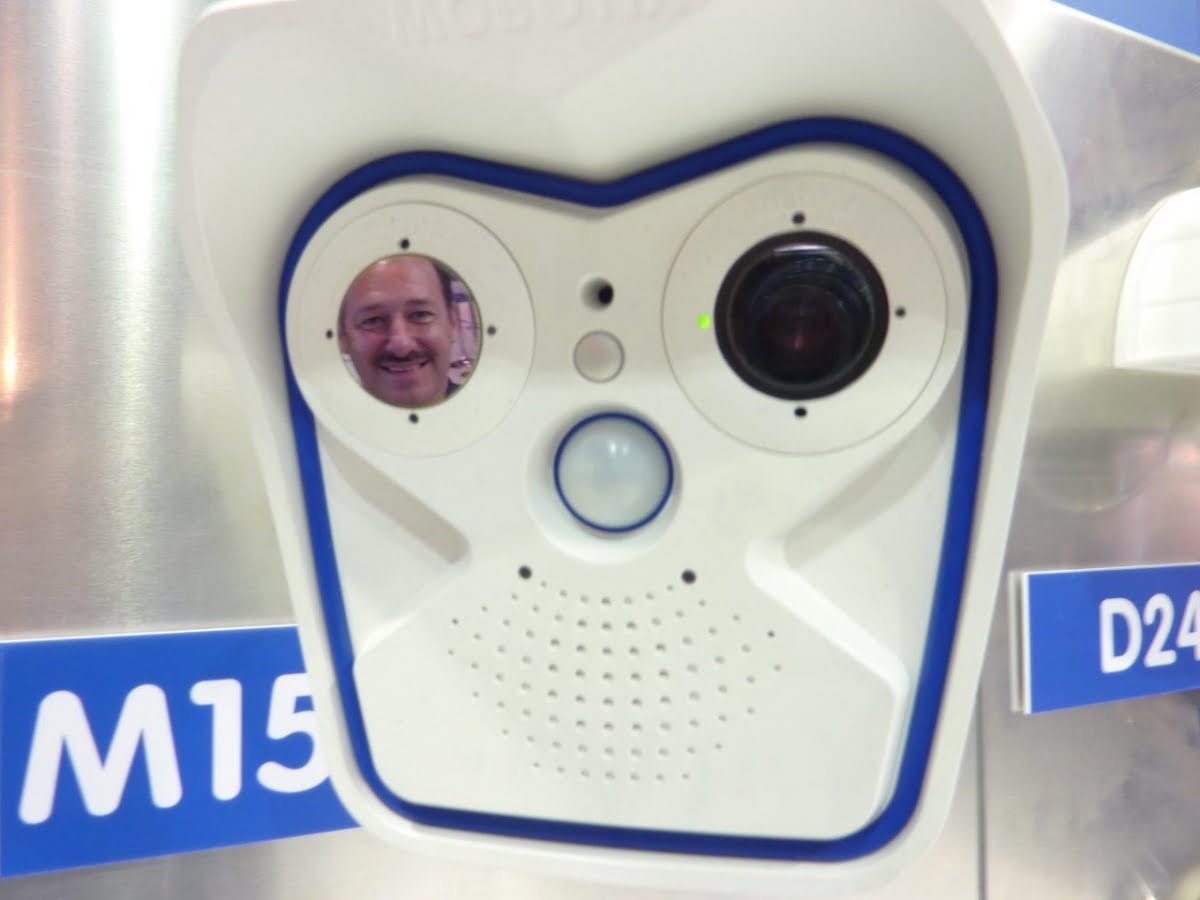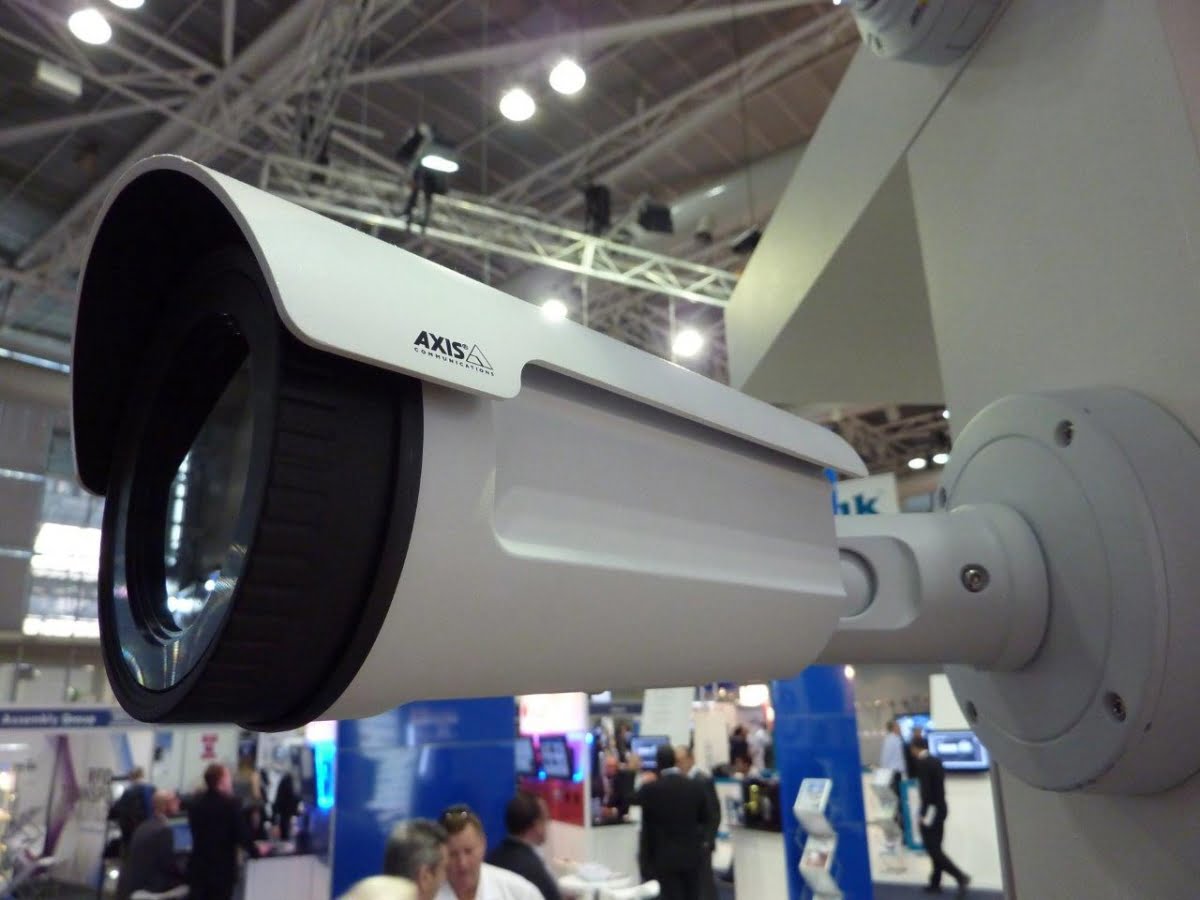Thermal cameras have been on a roll over the past couple of years and it seems every other manufacturer has a thermal PoE network camera in its lineup. While the applications for thermal seem specific, there’s a lot to like about this technology.
THERMAL cameras have a great strength. Although they don’t offer face or number plate recognition, they offer something else – visual confirmation of intrusion day and night. They are also capable of handling rain, hail, trees, grass, shrubs, bushfires and dust storms without expensive supporting light sources.
As well as confirming intrusion, thermal cameras offer head spinning working ranges. Even a modest unit can peer hundreds of metres into complete darkness across land or water, while high end units can detect intrusion at thousands of metres. What this means operationally, is that end users can extend their perimeter detection zones way past their boundaries, buying time in an intrusion event.
The engine of a PoE thermal imaging camera is the un-cooled microbolometer – essentially that’s a bolometer fitted as an image sensor. This sensor is responsive to IRE in the 8-13um range and when IRE reaches the microbolometer, it generates a cascade of electrical signals based on resistance which can be analysed to construct a thermal image. When you’re selecting a thermal camera you want coverage of that long 8um to 13um spectral band – that’s the spot you’ll get best penetration of smoke, fog and rain.
In very general terms, all microbolometers have certain similar characteristics, though each company licensed to build the technology interprets it independently and some manufacturers OEM tech from a third party. In terms of microbolometer construction, there’s typically a bottom layer of silicon, a readout integrated circuit and a reflector beneath the sensing layer to reabsorb spilled IRE. There’s also a sacrificial layer thermally isolating the IR material from the integrated circuit and an absorbing layer for the placement of electrical contacts.
Building a microbolometer is an expensive businesss with some or all of the fabrication process undertaken with the sensor encapsulated under a vacuum. This means even the most affordable thermal imaging cameras aren’t cheap but they are getting more and more affordable all the time. Consider that FLIR released a $US499 thermal camera at ISC West in Las Vegas.
“The key feature for end users that sets thermal cameras apart is the ability to detect intrusion in darkness and challenging weather conditions such as smoke, haze, dust and light fog”
In terms of image quality, the better low cost versions deliver 320 x 240 pixels while the cheaper arrays are 160 x 120 pixels. Recent releases incorporate 640 x 480 pixels using 25um pixel sizes. At 640 x 480 pixels you are beginning to detail and that means more contrast and better situational awareness.
The latest thermal cameras have the ability to penetrate fog, smoke and mist, as well as darkness. They are small and lightweight, have modest power consumption and being uncooled, they function on power up. Like most passive sensing devices, mean time between failure is lengthy. A thermal camera installed in a properly maintained protective housing might last decades.

FLIR thermal camera at 1.37pm with full sun above and to right of World Square at 1000 metres. Note detail in the brickwork, corrugated iron roofing and leaves on trees at 75 metres
Another strong feature of thermal cameras is the fact they give both analogue (mini-BNC) and digital outputs and that means the unit will stream video on a LAN with viewing and control handled by a Windows software application. Basic control features of thermal cameras include things like freeze/live, horizontal and vertical flip, black-hot/white-hot, colour palette control, video recording, searches, alarms on intrusion, NUC control, histogram display, automatic contrast enhancement, gamma correct ion and digital zoom.
What’s available
According to Brad Ballesty of Infratherm, the company’s most popular range is DRS thanks to great range and competitive price.
“DRS has predominantly played in the military market so the quality of its products is outstanding but have recently released a range of cameras targeted to the commercial CCTV market,” Ballesty explains.
“In saying that, we represent and service the products of 8 different thermal manufacturers and can sell everything from entry level fixed thermal cameras up to high end PTZ integrated optical and continuous thermal zoom cameras that can pick people up at 10km.”
According to Ballesty, the key feature of a quality thermal camera for end users is as early warning detection.
“We recently had a case where a client came to us with a job requiring around 90 IP cameras,” he says. “It was a large site with a perimeter fence some 80m away from the warehouse surrounding the building. We re-designed the spec with a thermal fence around the perimeter and incorporated video analytics.
“When we had finished we had 8 thermal cameras with analytics covering the perimeter fence line and 70 IP cameras. The client got an additional 100m of security in all directions and saved $A20,000. Better security at a cheaper price – now who doesn’t want that. This client can now be alerted if someone is approaching his fence 100m away from his building and do something about it – rather than with an optical design waiting until the perpetrator has kicked in a door to get notification that something is going on.”
Ballesty says another key feature for end users is the ability to thermal cameras detect and can notify over long distances at night with no lighting. This makes thermal a proactive tool that’s environmentally friendly and much less expensive than traditional flood-lit applications.
“Identifying threats before they happen is important for many applications,” Ballesty says. “It’s better to know someone had breached a fence line and is approaching your office or warehouse ten minutes before they kicked a door in and activate a reed switch.”
According to Ballesty, the things end users like most about thermal camera technology revolve around these core capabilities – 24-hour coverage without an expensive external light source and enormous range. Having a thermal perimeter gives end users peace of mind, he says. From the point of view of installers, Ballesty says IP-based PoE thermal cameras are relatively easy to install and program.

DRS WatchMaster Thermal IP camera
“As an installer selecting a thermal camera for a client, you’d be looking at things like ease of installation and programming, quality of build, camera performance and local back up and support,” says Ballesty.
Over at FLIR, Peter De Ieso says the most popular solution is the company’s F (Fixed) Series used to create a FLIR Thermal Fence. According to De Ieso, the thing installers and end users need to think about when selecting thermal cameras is temperature resolution.
“On the top of the list of the key feature is the temperature resolution expressed in milli Kelvin,” De Ieso says. “I enjoy working with 50mK or better, as this enables end users to see more detail and detect objects further away.
“A high temperature resolution, coupled with proven intruder detection algorithms, presents an end user with the technology to apply a visual alarm to areas of interest.
“Apart from high temperature resolution and proven intruder detection algorithms, the installer should be reviewing ease of use, environmental specification, warranty provided and how easily does the camera integrate with other systems,” he says.
What end users across a range of industries find so compelling about thermal cameras is that they give the ability to see in the dark.
“Everybody wants to see in the dark and most people are amazed that this military technology is now available at the consumer level,” De Ieso says. “Consider a security officer or law enforcement officer using a thermal imaging camera compared to a torch or a spotlight. Now they can detect intrusion without drawing attention to themselves.”
On the top of the list of the key feature is the temperature resolution expressed in milli Kelvin. 50mK or better enables end users to see more detail and detect objects further away.
When I was at the Mobotix Conference a couple of months ago, I got a look at the M15-D platform, which can include a thermal camera and an optical camera in a single IP65-rated PoE housing. Use of optical and thermal side by side was a real eye opener for me – it makes for a powerful solution.
According to Mobotix’ Frank Olson the MX-M15D-Thermal is based on the proven design of the M15 system platform and provides a range of applications. There’s an array of camera sensors (PIR sensor, microphone, etc), as well as the video analytic capabilities of MxActivitySensor video analytic software (video motion detection, event logic, etc). From Olson’s perspective, the key feature of the M15-D is that the camera measures the thermal radiation of objects so it can function in absolute darkness.
“Together with the new MxActivitySensor, the M15-D can reliably detect motion in images at night,” says Olson. “Importantly from the point of view of false alarms, only changes in position trigger a signal. Objects moving on the spot – trees or shrubs – do not.”
Olson points out something not widely considered – the fact thermal camera modules also have an advantage during the day since they can detect moving objects in shadows, semi-darkness or behind bushes.
“Mobotix thermal modules are designed for around-the-clock operation (80,000 hours MTBF) in industrial conditions and are certified as weatherproof to IP65,” he says. “Just like for the daylight modules, there are different focal lengths available for the thermal modules.
“The advantages of an M15-Dual with a thermal module and simultaneous daylight sensor lie in the combination of both images. You get brilliant 5MP optical images during the day and in twilight hours, as well as reliable motion detection at night with the thermal.”

Frank Olson and the M15-D
According to Olson, when installers are looking for a quality thermal camera they should be aware of the technology’s limitations.
“Different sensor types provide diverging sensitivity for various wavelengths,” he explains. “The human eye and a colour sensor are sensitive to visible light in the range from 390nm to 770nm. A black and white sensor is additionally sensitive for the near infrared range – it sees light the eye cannot see.
“But the thermal image sensor uses a complete different range of the electromagnetic spectrum – heat radiation. Due to the fact that the wavelength is around 10x longer, this radiation reacts different with typical material.
“Glass, for instance, does not let thermal radiation through and reflects it back,” Olson explains. “This means a thermal imaging camera cannot look through glass. Thermal radiation also has a different behaviour with other obstructions like fog, smoke or smog. Heat radiation for example can penetrate smoke completely which means intruders can be seen in a smoke filled room.
“Steam and gas like water-steam or carbon dioxide absorb the heat radiation. While absorbing, the heating energy is passed over to the steam or gas before it reaches the thermal camera. Subsequently, the penetration of these substances is reduced. Light fog can be penetrated while heavy fog cannot. These characteristics need to be taken into account by installers.”
According to Olson, what end users like most about thermal is that it adds a dimension to traditional security solutions.
“The advantages of an M15-Dual camera with a thermal module and daylight sensor originate from the combination of both images.”

For Axis Communications, the most popular IP network thermal camera is the AXIS Q19 Series.
According to Wai King Wong, the features installers should look for when choosing a quality thermal camera include intelligent video capabilities, outdoor-ready models with a window heater and lens options for different applications.
“I think the key feature for end users that sets thermal cameras apart is the ability to detect intrusion in darkness and challenging weather conditions such as smoke, haze, dust and light fog,” says Wong. “For end users, thermal cameras are a perfect complement to any network video system that needs to secure an area 24 hours a day, 7 days a week.”








